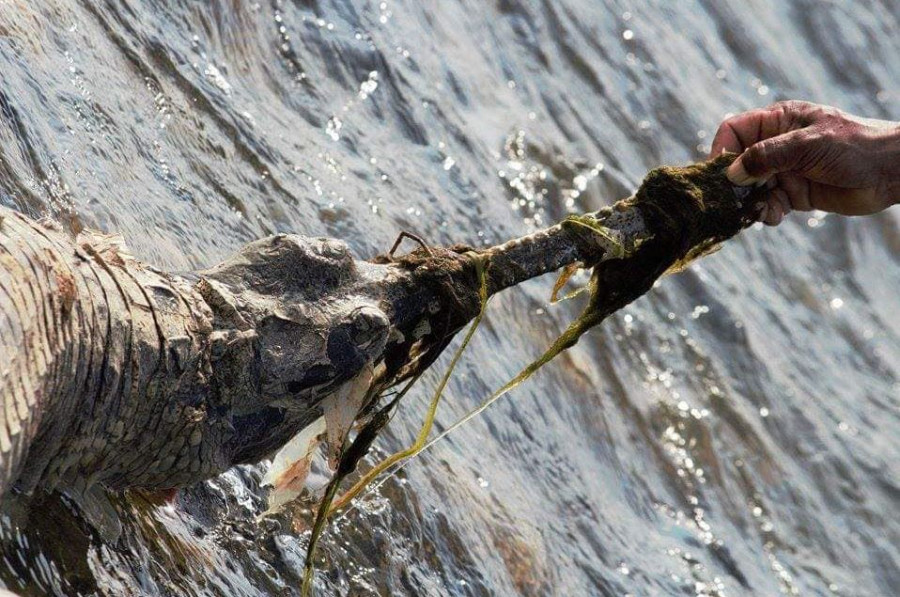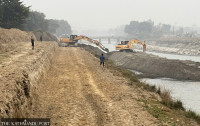National
Fishing nets a major threat for gharial conservation
Fishing nets placed in rivers are becoming a major threat for gharial conservation in Chitwan National Park (CNP), say conservationists.
Ramesh Kumar Paudel
Fishing nets placed in rivers are becoming a major threat for gharial conservation in Chitwan National Park (CNP), say conservationists.
According to conservationists, the endangered gharials are often trapped in fishing nets and die in CNP rivers and rivulets, mostly in the Rapti. Only in the past month, half a dozen gharials, the Gavialis gangeticus, were found trapped in fishing nets in the Rapti river. Three of them died.
The use of such fishing nets is unlawful. The CNP authority allows the Bote community, who eke out a living by fishing, to use hand-fishing net but bans the installation and use of big nets in water bodies.
Bikash Pathak, coordinator of Rapid Response Team (RRT) formed under the Kerunga Buffer Zone Consumers’ Committee of the CNP, said the rampant installation of the fishing nets in the rivers poses a great threat to the conservation of gharials. Pathak said that once trapped, these gharials cannot free themselves out of the big and strong nets, locally known as Tiyari. “In an attempt to free themselves, the trapped gharials often end up hurting themselves, with the thread of the net cutting into their hide. Moreover, because they are trapped, they cannot get prey and then die of hunger,” he added.
RRTs have been formed in various settlements of the CNP buffer zone area with an objective to rescue human beings (if they are attacked by the wild) and an objective to rescue animals if they are in problem.
Bedraj Khadka, the assistant conservation officer at the CNP and chief of Crocodile Breeding Centre, said that besides the problem with the fishing nets, there are various other factors that threaten the protection and preservation of gharials. “The gharials live in fresh-water systems. Their major prey is fish. If a river is polluted, there are neither fishes nor gharials. If the river is clean and has a thriving aquatic life, then there will be gharials,” said Khadka.
Khadka claimed the CNP and the security personnel deployed in the park are working to prevent such net trappings, but fishermen set up the nets by hoodwinking them. He admitted that pollution in the river and the use of such fishing nets are major challenges to preserve gharials.
If this culture persists, the effect will be directly seen in the drop in the population of gharials, which could pose a problem to breeding. For example, in the Narayani river three years ago, a male gharial had died after it was trapped in a net. After the death of the male gharial, another was brought from the Bardiya National Park and released in Narayani for breeding. The conservationists said number of male gharial is very less in comparison with the female.
Conservationists are of the opinion that government authorities as well as locals are not much concerned about gharial conservation. Conservationists opine that gharials are at a much higher risk of extinction than the rhino and the tiger. “The death and injuries of rhinos and tigers steal the lime light in conservation sector; however, the sharp decline of the number of gharials has been a neglected issue in the country,” said Khadka, claiming that nobody has been arrested and punished for poaching gharials. As per the existing legal provisions in the country, one is sentenced one to 10 years in jail or fine ranging from Rs 100,000 to Rs 500,000 or both if one is found poaching a gharial.
A total of 166 gharials were counted in the Rapti and Narayani rivers during the gharial census conducted in 2016. The country’s gharial population stands at 198.




 9.12°C Kathmandu
9.12°C Kathmandu1.jpg)















